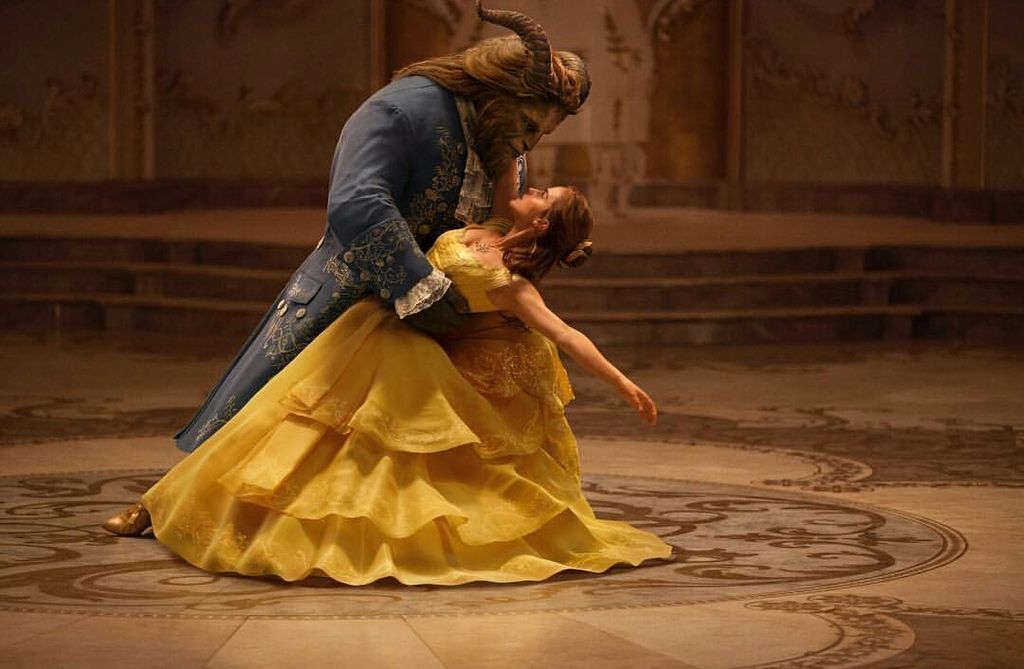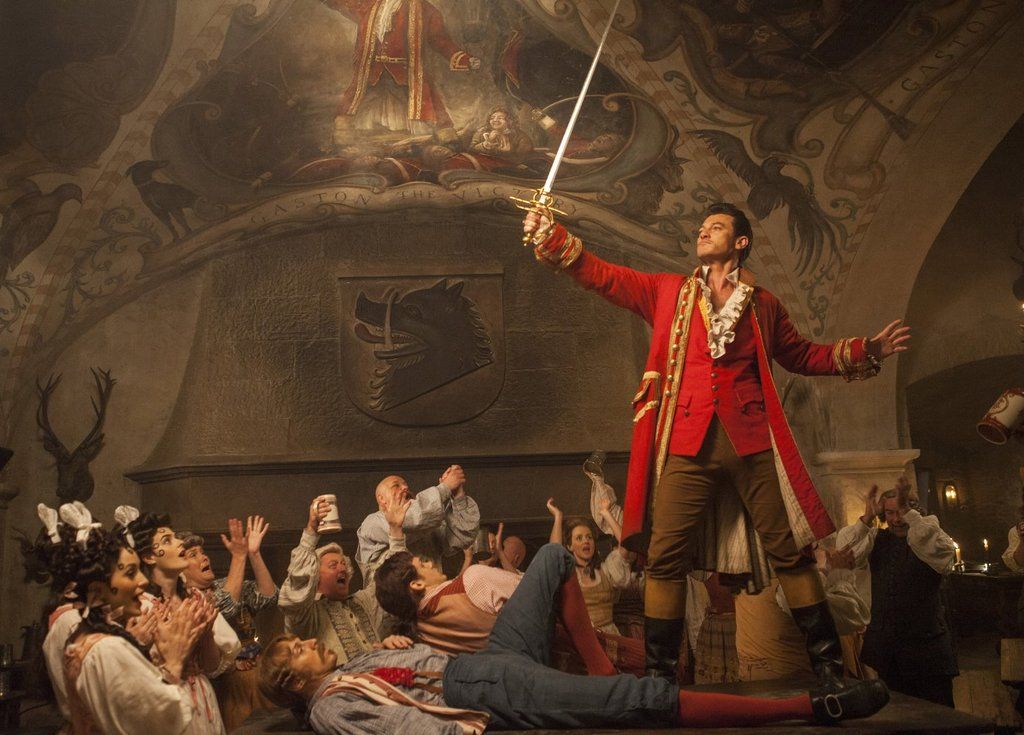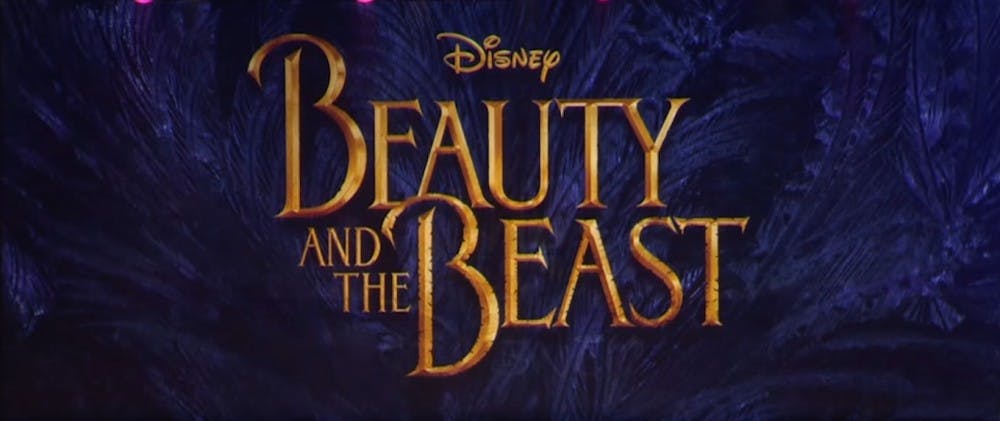There’s a certain danger when it comes to remaking such a well-loved tale, a story that people claim to have grown up with. Nostalgia might cover some of the flaws of Disney’s original animated iteration of Beauty and the Beast, but the newly released live action film did not have those same enchanted rose-colored glasses protecting it’s less than stellar execution. For a film about beauty being more than skin deep, the new Beauty and the Beast could be called shallow. The tale of Beauty and the Beast, when scrutinized could be called romanticized Stockholm Syndrome. This tale as old as time managed to steer it’s less than impressive premise away from audience’s focus with a dazzling cast and well-crafted CGI. However, nostalgia and set design couldn’t erase the obviously uneven distribution of effort when it came to crafting the renewed and revamped Disney classic.

Distractingly Dazzling Cast
It would be wrong to say that the cast of the film don’t perform their parts well. Some, namely Emma Watson’s performance as the iconic Belle, seem tailormade. Belle is developed further than just being bookish. The word “fearless” is specifically used as an admiring term for Belle’s mysterious, late mother and then later for Belle when she continuously proves herself the hero of the story. Rather than resorting to loud criticisms of beastly behaviour, Belle—rightly so—takes her safety into her own hands. She smacks around talking candelabras and punches wolves; she proves to be more than just a sweet bookworm. Belle is brave, smart, kind, and essentially perfect, which makes for a rather flat character.

Where Belle is expanded on, the Beast (who was unnamed throughout the film) is scaled back in terms of charm. His sulkiness defines him, leaving audiences to question the budding romance between Belle and the Beast. Moments that were meant to redeem the Beast’s earlier bad behaviour seem more to contribute toward his aloof, aristocratic past. When he gives Belle her library in the new film, it was not a premeditated, thoughtful gift but rather an offhand comment that translates more as snarky than considerate. Snark can be made charming, and broodiness can be attractive, but Beast’s execution of his particular brand of moodiness reads as annoying or even ingenuine. The two principal performances are frankly forgettable, their screen time winnowed down by the film’s wandering focus.
It is secondary, even tertiary characters who steal the spotlight. Gaston and Lefou’s performances are exaggerated to the point that the title characters are forgettable. The sheer amount of time spent in the village with Gaston seems to communicate that he is meant to be more of a main character than ever before. Gaston is villainously dense, which fits since he is the bad guy of the story, but he is also strangely three-dimensional. He has more of a backstory, character motivation, and a rapport with more than a handful of characters. This is all more than can be said for Belle. That said, Luke Evans’ Gaston is a charismatic combination of jock and psychopath.

The same can be said for Lefou, who gains more personality and might be one of the most memorable characters in the film thanks to his reincarnation via Josh Gad. He provides much needed humor to situations that could have quickly become too tense for a movie marketed as family friendly. Those tense moments are back in the village, where the movie spends a significant amount of time establishing the world’s inner working and Belle’s family’s place there. Her father Maurice is also an incredibly detailed character with his own story arc. His increased screen time helps to better explain Belle’s affection toward him and her own genius. There is significantly more screen time spent on establishing Gaston, Lefou, and the rest than there is for the Beast or for his Beauty.
The cast is considerably star-studded throughout. It was unfortunate that audiences don’t get to see this wide-ranging cast until the end of the film when characters are no longer candelabras, clocks, or harpsichords.
Gorgeous to a Fault
The most time, and seemingly the most production effort, is spent on the set and the inanimate cast. To match the more historically accurate decor, Lumiere, Cogsworth, and others are reimagined in extravagant detail. This incredibly ostentatious detail isn’t exactly easy on the eyes. It is difficult to know at any one time where to look. In an effort to seem polished, the film is instead gaudy. Even the more simplistic characters, such as Mrs. Potts, are too real to be anything but unnerving. Conversely, the Beast–one of the most anticipated animations–is never focused on enough for the audience to really appreciate effort put into his new design. There is almost a kind of motion blur used in order to smooth out flaws. This effect does more to bring focus to the flaws than distract from it. To give all credit where credit is indeed due, the animators make an intensely lifelike fairy tale, but stark reality takes away some of the charm when it comes to extended CGI sequences that may induce motion sickness. Certain sequences, often those ripped directly from Disney’s original animation such as the “Be Our Guest” song, clash with the actual sets and dragged.

What does work when it comes to outright ostentation is the set. Set and costume design have been painstakingly rendered and help to bring the magical castle more to life than living furniture does. This is clear in Belle’s dresses which have some new quirks and others which harken to old, familiar designs. Costuming especially helps to communicate the film’s new dedication toward the historical aspects of the story. Costumes of those who lived in the castle, when the Beast was a haughty aristocrat, reflect the height of French fashion of the time with modern twists.
The background of Beauty and the Beast is much more subtle than the inanimate characters inhabiting it. That said, there is still a clear effort made in creating the castle, the village, and the sets upon which Beauty fell for the Beast. This subtlety is more beneficial for keeping audience’s eyes from wandering from the story.
Unless that was the intention. Musical interludes serve to highlight the set. Characters are gaudily elaborate. The village is more of a central hub of the tale than the Beast’s castle. This all brings attention away from a one note romance that is purportedly the main focus of the story. There’s not much reason behind why Belle falls in love with the Beast other than she is kind, and he isn’t Gaston. Despite what the talking teapot sings, audience can’t clearly detect “something there that wasn’t there before,” when it comes to Beauty and the Beast’s romance. Instead of stepping away from the simplicity of fairy tale love, the new film embraces it.
This fairy tale is just that: short, sweet and without serious depth. Which absolutely worked for what the film seems to be trying to achieve in a renovated retelling of a timeless tale. Beauty and the Beast is definitely beautiful, alive with music and colorful characters, but beyond this performance, the writing falls flat and feels dusty when compared to the shiny new sets.
All Images From: IMDb, Movie Insider, and Daley Wilhelm





